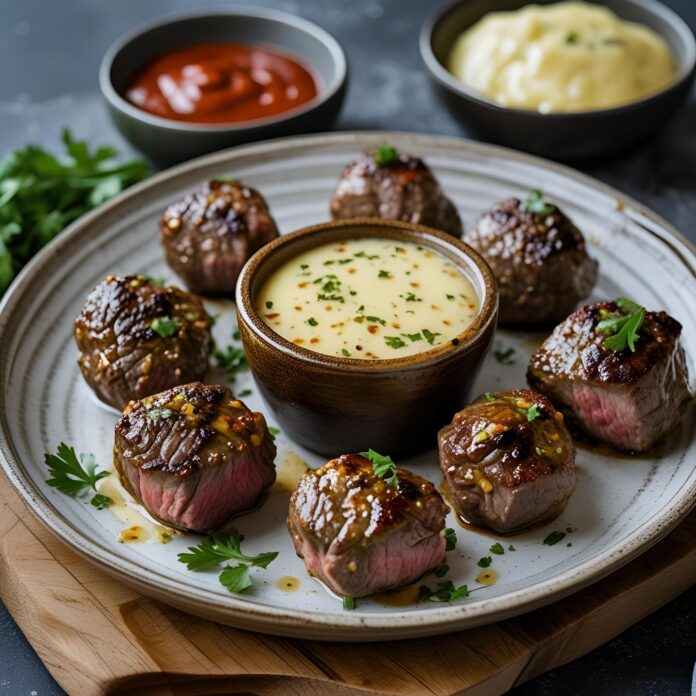Cheesy Tortellini Bake Recipe
Comfort food has a special place in the hearts of many, and few dishes capture that warm, indulgent feeling quite like a cheesy tortellini bake. This dish is the perfect marriage of tender pasta, rich and gooey cheese, and flavorful tomato sauce—baked together until bubbly and golden. Whether you’re cooking for a busy weeknight dinner, a casual gathering, or a family celebration, a cheesy tortellini bake offers both ease and satisfaction in every bite.

Tortellini itself is a beloved Italian pasta, traditionally filled with cheese, meat, or spinach. Its ring shape not only makes it fun to eat but also perfect for baking, as it holds sauce and cheese within its folds, creating a burst of flavor with every mouthful. When combined with creamy cheeses and a robust tomato sauce, baked tortellini becomes a hearty, crowd-pleasing meal that requires minimal fuss but delivers maximum taste.
This recipe embraces versatility. You can customize it to suit your preferences—swap the traditional tomato sauce for a creamy Alfredo, add your favorite vegetables or meats, or experiment with different cheese blends. Regardless of how you personalize it, the fundamental joy comes from layering simple, high-quality ingredients and baking them to perfection.
In the following sections, we’ll explore the origins of tortellini and baked pasta dishes, a detailed breakdown of ingredients, step-by-step instructions, tips for perfect baking, and creative variations. You’ll also find suggestions for side dishes and wine pairings, making this recipe a comprehensive guide to mastering cheesy tortellini bake.
History and Cultural Background
The Origins of Tortellini
Tortellini, those delightful little pasta rings filled with cheese, meat, or vegetables, hail from the Emilia-Romagna region of northern Italy. The story of tortellini dates back centuries, with its first documented mention in the 14th century. According to Italian folklore, the shape of tortellini was inspired by the navel of Venus, the Roman goddess of love and beauty, reflecting the care and artistry that go into crafting these delicate parcels.
Traditionally, tortellini fillings vary depending on the locale, with meat, ricotta, and Parmigiano-Reggiano cheese being staples in classic recipes. The pasta is usually served in broth as a soup, known as “tortellini in brodo,” especially during festive occasions like Christmas.
Evolution of Baked Pasta Dishes
Baked pasta dishes, or “pasta al forno,” are a cornerstone of Italian home cooking, especially in southern regions like Sicily and Campania. These dishes combine cooked pasta with sauces, cheeses, and often meats or vegetables, then bake them until the top is golden and bubbly.
While tortellini is traditionally served in broth or with sauce, baking it introduces a comforting twist—transforming the dish into a casserole that’s both hearty and convenient. Baked tortellini dishes have become popular in Italian-American households, where flexibility and ease are highly valued.
The Appeal of Cheese in Italian Cooking
Cheese is central to Italian cuisine, with a wide variety ranging from fresh cheeses like ricotta and mozzarella to aged ones like Parmigiano-Reggiano and Pecorino Romano. Cheese adds creaminess, depth, and umami to dishes, making it an indispensable ingredient in pasta bakes.
Combining cheeses in a tortellini bake not only enhances flavor but also creates a luscious texture that contrasts perfectly with tender pasta and tangy tomato sauce. The melting quality of cheeses like mozzarella combined with the nutty sharpness of Parmesan offers a balanced and indulgent taste experience.
Modern Interpretations and Popularity
Today, cheesy tortellini bakes are a popular comfort food across many cultures. They are especially favored for their convenience—using store-bought tortellini reduces prep time, and the bake can often be assembled ahead of time, making it ideal for busy families or casual entertaining.
Moreover, this dish invites creativity. Whether you incorporate vegetables like spinach or mushrooms, meats such as sausage or chicken, or experiment with different cheeses and sauces, the basic framework of a tortellini bake can adapt to diverse tastes and dietary preferences.
Ingredient Overview
Every great dish starts with great ingredients, and a cheesy tortellini bake is no exception. Each element contributes texture, flavor, and balance, coming together to create a comforting, satisfying meal. Here’s a detailed look at the essential ingredients, why they matter, and how to choose or substitute them.
1. Cheese-Filled Tortellini
Primary Role: The star of the dish, providing pasta and filling all in one
Type: Fresh or frozen cheese tortellini (ricotta and Parmesan fillings are classic)
Amount: Approximately 1 to 1½ pounds
Tortellini forms the base of the bake and carries the cheese filling inside its tender pasta. Fresh tortellini cooks quickly and has a delicate texture, while frozen tortellini offers convenience and a longer shelf life without sacrificing quality.
Tip: Avoid overcooking the tortellini before baking. Cook it just until al dente since it will continue to cook in the oven.
2. Tomato Sauce
Primary Role: Provides moisture, acidity, and a rich base flavor
Type: Marinara, pomodoro, or a chunky tomato sauce
Amount: About 3 to 4 cups
Tomato sauce brings tanginess and depth, balancing the richness of the cheese. Using a high-quality store-bought sauce is fine for convenience, but homemade sauce allows for customization of flavor and sweetness.
Variation: For a creamier option, substitute part or all of the tomato sauce with Alfredo or béchamel sauce.
3. Cheese Blend
Primary Role: Adds gooeyness, richness, and flavor complexity
Common Choices: Mozzarella for meltiness, Parmesan for sharpness, ricotta for creaminess
Amount: Typically 2 to 3 cups total, combining shredded and fresh cheeses
Mozzarella is essential for that bubbly, stringy cheese pull on top. Parmesan adds umami and a slightly nutty finish, while ricotta mixed into the sauce or dolloped throughout adds softness and moisture.
Tip: Use whole milk or part-skim mozzarella, depending on your desired richness. Freshly grated Parmesan melts better and tastes more vibrant than pre-grated.
4. Garlic and Onion
Primary Role: Aromatics that build flavor depth
Type: Fresh garlic cloves and yellow or white onions
Amount: 2 to 3 cloves garlic and 1 medium onion
Sautéing garlic and onion in olive oil or butter before adding sauce helps create a savory foundation. These aromatics release their natural sugars and oils, enriching the overall flavor of the bake.
5. Olive Oil or Butter
Primary Role: For sautéing aromatics and enriching the sauce
Type: Extra virgin olive oil or unsalted butter
Amount: 1 to 2 tablespoons
A good quality olive oil adds a fruity richness, while butter lends a creamy mouthfeel and depth.
6. Herbs and Seasonings
Primary Role: Enhance and complement the flavors
Common Choices: Fresh or dried basil, oregano, parsley, salt, pepper, red pepper flakes
Amount: To taste; typically 1 to 2 teaspoons of dried herbs or 2 tablespoons fresh herbs
Herbs like basil and oregano are classic in tomato-based Italian dishes. Fresh parsley sprinkled on top after baking adds a fresh, vibrant note.
7. Optional Vegetables and Add-ins
Popular Choices: Spinach, mushrooms, bell peppers, sun-dried tomatoes, cooked sausage or chicken
Amount: Variable, depending on preference
Adding vegetables or proteins can boost nutrition and add layers of flavor. For spinach, stir in fresh leaves just before baking; mushrooms and bell peppers are best sautéed beforehand to remove excess moisture.
8. Breadcrumbs (Optional)
Primary Role: Adds crunchy topping and texture contrast
Type: Plain or seasoned breadcrumbs
Amount: ½ cup sprinkled on top before baking
A light dusting of breadcrumbs mixed with Parmesan can create a golden, crispy crust that contrasts beautifully with the soft pasta and melty cheese.
9. Milk or Cream (Optional)
Primary Role: To loosen the sauce and add creaminess if needed
Amount: ¼ to ½ cup
If the sauce feels too thick, a splash of milk or cream can balance the texture, making the bake luscious without weighing it down.
Cheesy Tortellini Bake Recipe
Comfort food has a special place in the hearts of many, and few dishes capture that warm, indulgent feeling quite like a cheesy tortellini bake. This dish is the perfect marriage of tender pasta, rich and gooey cheese, and flavorful tomato sauce—baked together until bubbly and golden. Whether you’re cooking for a busy weeknight dinner, a casual gathering, or a family celebration, a cheesy tortellini bake offers both ease and satisfaction in every bite.
Ingredients
- 1 (19 oz) package refrigerated or frozen cheese tortellini
- 2 cups marinara sauce (store-bought or homemade)
- 1 ½ cups shredded mozzarella cheese
- ½ cup grated Parmesan cheese
- 1 cup ricotta cheese (optional, for extra creaminess)
- 1 tsp Italian seasoning
- 2 cloves garlic, minced
- Salt and pepper, to taste
- Fresh basil or parsley, chopped (for garnish)
Instructions
- Preheat Oven:
Preheat your oven to 375°F (190°C). - Cook Tortellini:
Cook tortellini according to package instructions (usually 3–5 minutes). Drain and set aside. - Mix Ingredients:
In a large bowl, combine cooked tortellini, marinara sauce, garlic, Italian seasoning, half of the mozzarella, half of the Parmesan, ricotta (if using), salt, and pepper. Mix well. - Assemble in Baking Dish:
Transfer the mixture to a greased 8x8-inch baking dish or similar size. Sprinkle remaining mozzarella and Parmesan cheese evenly on top. - Bake:
Bake uncovered for 20–25 minutes until the cheese is bubbly and golden on top. - Garnish and Serve:
Remove from oven, let cool for 5 minutes, garnish with fresh basil or parsley, and serve warm.
Notes
- Add veggies: Toss in spinach, mushrooms, or bell peppers before baking.
- Make it spicy: Add red pepper flakes or a dash of hot sauce to the sauce mixture.
- Protein boost: Stir in cooked Italian sausage, grilled chicken, or bacon bits.
- Make it vegan: Use vegan cheese alternatives and omit ricotta or use a plant-based ricotta substitute.



